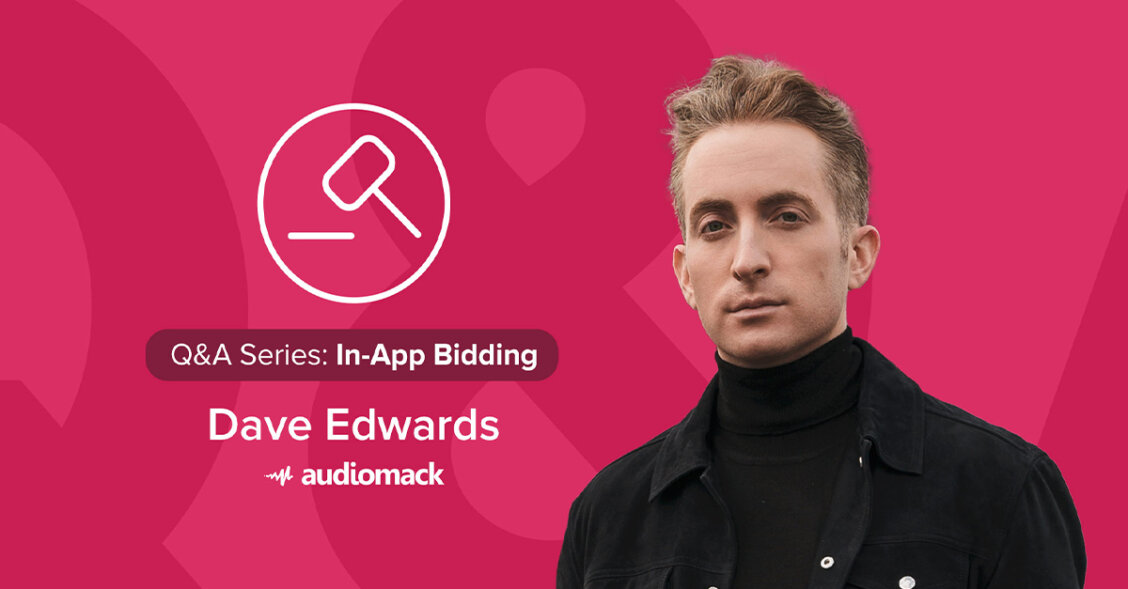
Q&A: How Audiomack Reduced Latency and Increased Revenue up to 40% with Vungle In-App Bidding
Audiomack is a youth-focused music streaming platform that allows creators to share unlimited music and podcast content for free. Since it launched in 2012, Audiomack has served billions of streams and currently reaches over 20 million monthly users globally.
Learn from Dave Edwards, SVP Revenue, on how moving to in-app bidding with Vungle reduced latency and boosted Audiomack’s revenue by up to 40%.
What motivated you to switch from waterfall to in-app bidding?
When we first learned about Vungle’s in-app bidding solution, we knew that it could help us accelerate growth by increasing eCPMs and revenue, which is always our priority.
What was especially appealing to us, though, was mitigating latency in the waterfall and the very onerous task of doing geo-specific line-items. We have a lot of users outside the U.S., especially in Africa, where they tend to have slower connections and devices. In fact, over half of our audience comes from Nigeria and Ghana. When you think about a waterfall running in a country like Nigeria, it’s not going to be efficient.
So we’re always thinking about how we can minimize latency to enhance the user experience. With the ability to serve ads instantly and automatically, in-app bidding gave us a lot of the operational advantages we needed to accomplish that.
Considering how easy it was to set up and manage, moving to in-app bidding with Vungle as soon as it became available just made sense.
Tell us more about the process of moving to in-app bidding.
It was pretty straightforward. We were already partnering with a mediation platform. After updating the Vungle SDK, all it took was creating a new line item ID for each provider who supported in-app bidding.
Overall, that one line item ID instead of dozens for different tiers – and various price points within those tiers – makes the in-app bidding setup and maintenance so much easier than the old waterfall method. Needless to say, it saved us valuable time and boosted our productivity.
Were there any challenges or concerns that came with in-app bidding?
At first, we were a bit nervous because in-app bidding was such a huge change. That said, there are obviously some nerves that will accompany any big change you make to your bottom line. It’s like any business: if you have a retail store and you’re about to change your point-of-sale system, even if it’s going to be better, you’re still going to be nervous because it’s a change that could affect your revenue.
However, I haven’t spoken to any publishers who moved to in-app bidding who’ve had a bad experience, and we certainly didn’t. So in hindsight, there wasn’t much to worry about.
“Vungle served three times more impressions to users globally with in-app bidding, and the increased demand diversity and competition helped boost our revenues by up to 40%.”
How has in-app bidding helped your monetization and latency goals?
We saw a substantial performance boost early on from the increased competition and greater access to top bidders on Vungle’s ad network. Results have been fairly consistent since then.
With Vungle, we saw a robust Q4 with a significant reduction in latency and increases in eCPMs by at least 20%. For the most part, these results carried over into Q1.
We attribute that to the fact that more advertisers had the equal opportunity to bid on our video inventory via the unified auction. This setup automatically drives up competition and results in higher eCPMS, and is just a more efficient and fair setup. So we weren’t surprised that we saw better performance by flattening the waterfall with in-app bidding.
Compare that to the entire idea of the waterfall itself, where if you have a provider that’s quite far down, and you have a lot of line items and partners, that provider may not even get a shot at an impression simply due to latency and the time the waterfall could take to work its way down to that provider. It just never made sense to us, and I doubt it makes sense to most publishers.
Overall, there’s just no downside to in-app bidding that we’ve seen. We have much, much lower latency, which, even if you don’t have a lot of users outside the U.S., should always be a priority and focus. Vungle served three times more impressions to users globally with in-app bidding, and the increased demand diversity and competition helped boost our revenues up to 40%. We wish that all of our partners were on in-app bidding at this point. It would make our lives easier, and I think it would make the ecosystem more transparent and more efficient.
So to any other publishers who haven’t moved to in-app bidding, I have to ask: what are you waiting for?
Accelerate your revenue growth with Vungle in-app bidding today. Sign up